This article is reproduced from autocarweekly WeChat public account.
Author: Karakush
This spring, autonomous driving seems to be getting closer to the human world. Huawei’s rise has set off a wave of rhythm, and the old-timers couldn’t help but come out one after another, thriving.
Last week, I went to Yizhuang in Beijing and experienced the autonomous driving of Pony.ai, a domestic autonomous driving start-up that specializes in Robotaxi (autonomous driving rental vehicles). It has now announced the expansion of its service scale, covering the core operating areas of the economic and technological development zone of 150 square kilometers in Beijing.
“Square kilometers” is a highlighted concept, which replaces the previous concept of road sections with regions as the unit, and is regarded as a signal of “entering the second half”. The region covers about 150 sites. The operation time is from 8:30 to 22:30, regardless of morning and evening rush hours, sunny or rainy days, and sandstorms.
Previously, Pony.ai had already launched the same service in the Nansha District of Guangzhou, covering an area of 300 square kilometers, including transportation hubs such as high-speed railway stations and port terminals, public facilities such as government centers and sports halls, as well as key commercial centers and residential areas; and planned to start in Shanghai (Jiading) next. In addition, they are also conducting operations in Irvine and Fremont, California, USA.
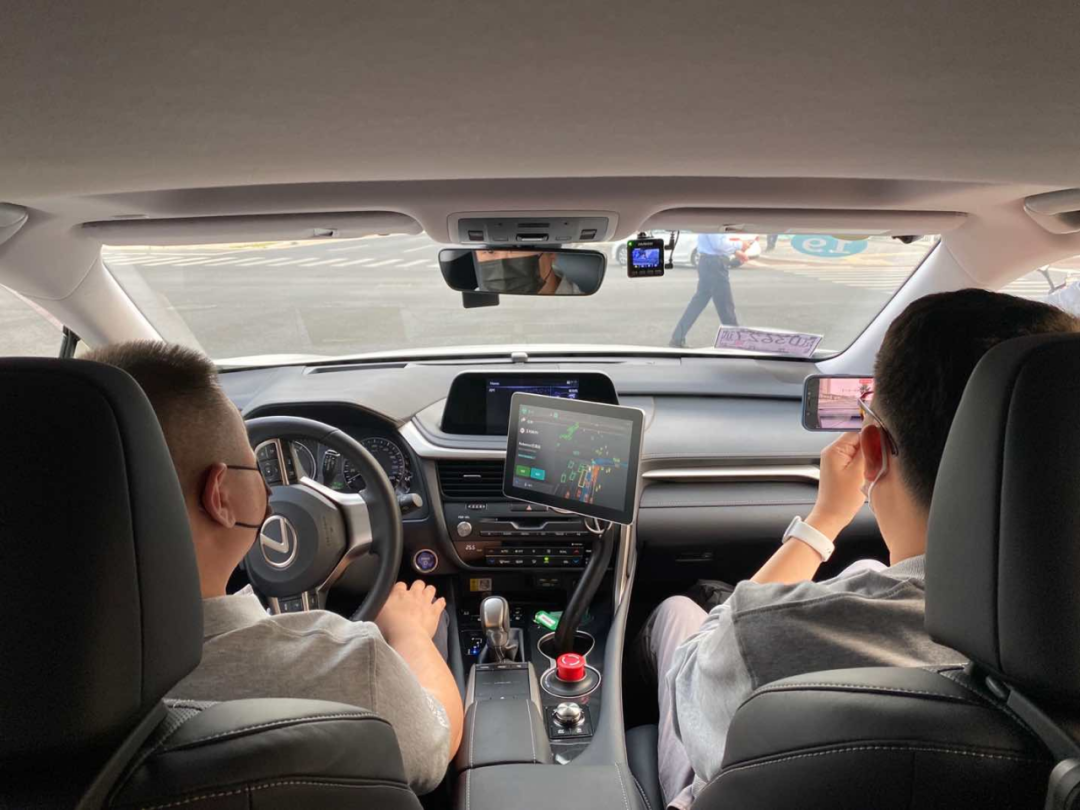
I took a small circle near the Gran Melia Hotel in Yizhuang. It was a pity that I didn’t encounter any special tests, but I could roughly appreciate the challenges of the route, such as complex road conditions, not easy traffic, and some non-standard mixed traffic. There was a safety officer on board and no takeover throughout the journey.
To be honest, I feel similar to the Huawei experience in Shanghai Jinqiao last time (“Huawei automatic driving: the great country’s heavy equipment that has been flirted eight hundred times and still burns the mouth”), except that the whole process is smoother and there is no heavy braking. However, both parties may be uncomfortable with such statements.
Pony.ai will feel that it has been downsized. After all, Robotaxi is at least L4 technology and cannot be compared with the technology that is based on “human-machine co-driving”; Huawei will also feel underestimated as the Huawei Inside car model plan will be delivered this year, and it will soon have friends to pay the bill and hit the road.
Compared with this, the commercialization of Pony.ai and all Robotaxis still needs to wait-a long time. At present, Pony.ai’s Robotaxi service is actually equivalent to public beta testing. If the general public wants to use it, they need to fill in a questionnaire after downloading the APP and apply for an invitation code before they can arrange a trip in the designated area (Yizhuang and Jiading in Beijing, Nansha in Guangzhou).This seems to fit the impression that the public has of Robotaxis: science fiction that has been shouted “the future is here” in the news for eight hundred times, in reality either still in the “testing” or “demonstration” stage. In other words, it seems impressive, but there is no practical use.
Is the revolution still eight hundred streets away?
Robotaxi was once a project at the forefront of the trend.
In 2016, the industry saw the first batch of experimental small car fleets open to the public. The concept was very novel, and capital was attracted. A few high-profile leaders, including Waymo, which spun off from Google, and General Motors, which acquired Cruise, were rapidly gaining momentum… including Pony.ai, which was also established that year.
However, the progress towards commercialization was much longer than expected. After several landing plans were delayed in 2018, there were no real breakthroughs. Commercialization was related to the two key indicators of providing fee-based services with no safety supervisors on Robotaxis, which was not achieved until last October, when Waymo finally provided such services to the general public in Chandler, Arizona.
These two underlined requirements are the key thresholds for basic commercialization. You may not make any money for a long time, but at least you must have a model that is tangibly linked to real-world applications.
Robotaxi must be “driverless,” but whether or not it can be implemented depends on policies. Some places in China are gradually opening up. For example, since January of this year, in the Pingshan District of Shenzhen, AutoX has been offering Robotaxi services to the public with no drivers or safety supervisors, making it the first truly “driverless” Robotaxi in China.
Management plans vary widely from place to place. It was not until the end of last year that Beijing finally allowed autonomous driving tests on public roads for the first time. Baidu Apollo received the first batch of five notices for autonomous road testing (first phase).
There are also barriers to entry and division of admission. There are applications for unmanned operation and applications for manned operation, with cumulative experience points for each stage, unlocking scales and processes. For example, when applying for unmanned operation for the first time, no more than five vehicles can be used; after the unmanned testing mileage exceeds 40,000 kilometers and no responsible traffic accidents or out-of-control situations occur, an increase in the number of vehicles can be applied for. As for manned testing, it can only be opened to the public in the second stage, and each person must purchase seat insurance or commercial insurance for no less than 2 million yuan (approx. 310,000 USD), and even at the third stage, a safety supervisor is a must.
According to the road test report in Beijing, as of last year, only Baidu and Pony.ai have obtained manned licenses in Beijing. Baidu has 43 vehicles in the third stage, and Pony.ai has 5 vehicles in the first stage, only open to internal personnel. This year, Pony.ai was able to open to the public and obtained a manned testing license for 30 vehicles in April.
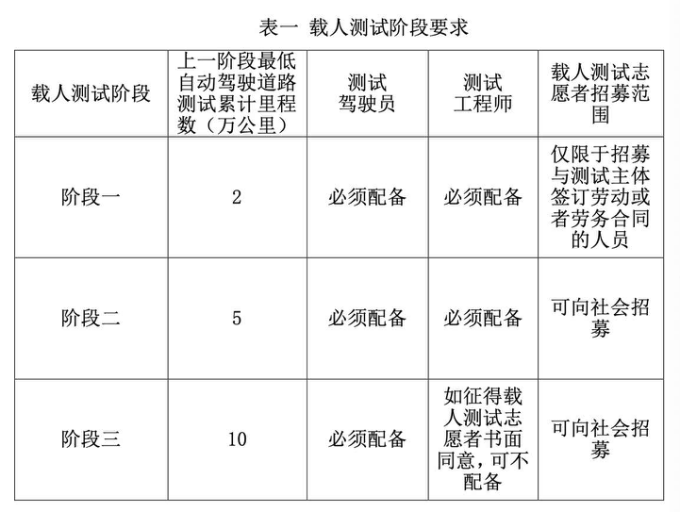
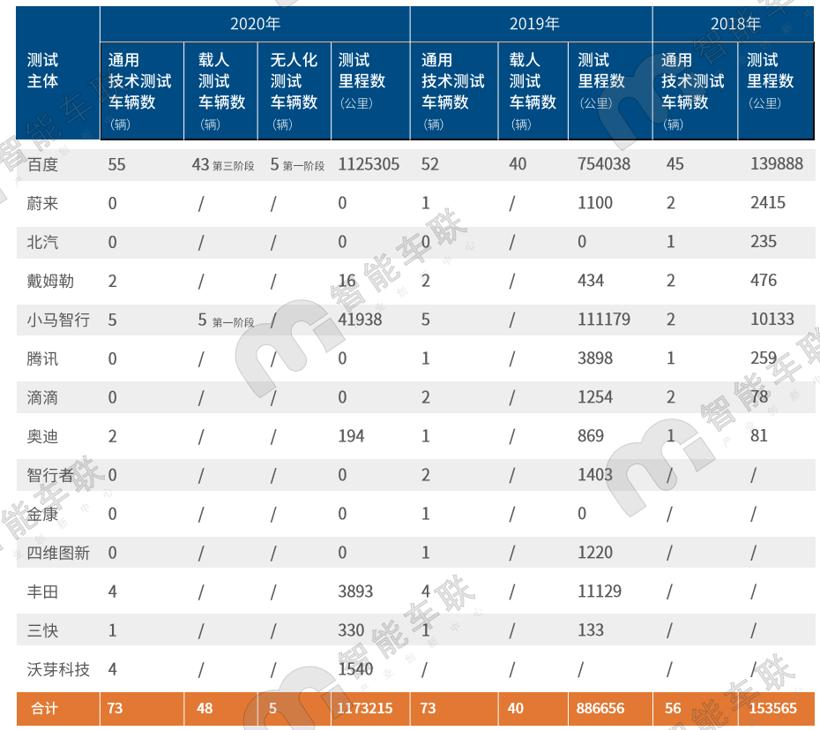
We often hear about road test licenses being distributed around like dumping, but in reality, there are not many licenses that support Robotaxi trial operations. According to Shanghai’s road test report, only Didi and AutoX conducted passenger-carrying trials last year, and both had to be equipped with safety personnel.
Next, let’s look at the technology. There are many demands from the industry for “extracting people,” believing that policies should take off with technology. However, the current restrictive access policy is unclear whether it limits the scale of development or gives feedback on the level of technology, to further ensure safety. After all, difficult cases are still a long-term problem for autonomous driving. Everyone can brag about their advanced technology, but no one can guarantee that “unmanned” is responsible.
On the other hand, charges have to be established. This is also constrained by policies. For example, Beijing has always required “testing” to be for scientific experiments, not for transportation operations, and therefore cannot charge fees. It wasn’t until April of this year that the “pilot zone” policy was officially approved, which explicitly encouraged commercial operations within pilot zones, and businesses could provide fee-based services.
During the May Day holiday, Baidu Apollo launched the country’s first Robotaxi fee-based project at the Shougang Park in Beijing. According to the experience report from “Everyday Economic News,” the 800-meter journey took 2 minutes, and the fixed price was 30 yuan, which is nearly three times the price of a Beijing taxi. It also sounds more like a “park resort” project, where passengers cannot specify the route and can only choose from several fixed routes. Although there is no driver in the main seat, a safety person is still arranged to watch over them in the passenger seat.
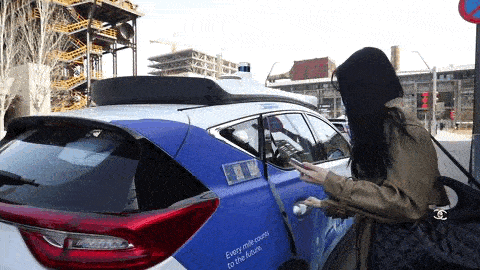
This is still far from the ideal commercialization. Ultimately, the price of Robotaxi must be lower than that of human-driven taxis–that is the advantage and the ultimate goal. Today, ride-hailing and car rental services, including driver costs in management, account for about 70% of the total costs; however, all costs of autonomous driving are declining and will further decline.
From these two dimensions alone, the industry’s only commercialized Robotaxi service is Waymo. It is not only “unmanned ride-hailing,” but also a bit cheaper than the local Uber. Even so, the journey ahead is still very long.
Last week, JJRicks, a former Waymo taxi driver and a YouTuber, released a video of his daily testing. During the journey, Waymo needed to turn right onto a multi-lane road, and one of the lanes was closed for construction and surrounded by ice cream cones. Unexpectedly, Waymo got stuck in the middle of the road, and requested remote team intervention. It intermittently moved a bit, but in the end, it still needed human assistance to reach its destination.Waymo explained that it was the remote team’s feedback error that caused them to fail to continue later. However, it is somewhat questionable that such a large-scale solution is needed for a daily road closure in a city where Waymo has been deeply involved for many years, at least indicating a lack of reliability. Although the UP master emphasized that there were no problems in the seven journeys that followed.
Even if the experience is impeccable, it doesn’t prove anything. Chandler is a suburban area of Phoenix with a sparse population, simple traffic, and is equivalent to a novice village for autonomous driving. The learning efficiency is not high, and the prerequisite for living here is to have a car, so there is not much demand for calling a car. Therefore, last week, Waymo applied for a permit to operate a paid service with safety personnel in San Francisco, California.
And this is currently the most decent and forefront commercial project in the industry.
Route? Sorry, there is no route
The delay in commercialization far exceeded expectations, causing Waymo’s valuation to plummet seriously in the past two years. Compared to a high point of 175 billion US dollars, it shrank by 40% in 2019 and 85% in 2020.
Within the autonomous driving circle, there are also differing opinions on Robotaxi. The most vehement opposition recently comes from the person in charge of Huawei ADS, Su Jing. He has expressed a personal stance in media interviews–“Even if you kill me, I will not do Robotaxi.”
In Su Jing’s view, Robotaxi is a result, not a commercial goal. This is the most difficult problem, and technically it requires eliminating all Corner Cases. However, there will always be a long and imperfect process to take over before everything is perfect. This process is very long and requires a lot of cars running for N years. Until the data tells you it’s okay, you can’t.
“At the end of the day, the person who reaches Robotaxi is the one who makes passenger cars. That market must be mine, but not now.”
The language is rough, but it roughly aligns with the industry’s judgment. Robotaxi is unlikely to be commercialized within five years. Cheng Wei, the CEO of Didi, once said that he was prepared to make continuous investments for at least ten years.
When it comes to the time for commercialization, the rhetoric of PonyAi is also vague. It’s not a relationship of just 0 and 1, but it’s phased, and as the industry develops, there will be more technology and products… Lou Tiancheng and Peng Jun expressed an attitude during an interview:# Self-driving technology: Different Development Paths
Autonomous driving is a new technology that can be attempted in different development paths, and there is no right or wrong, let alone good or bad. The development of emerging technologies is not linear. Strictly speaking, the development path is only a way of doing things, and fundamentally, it depends on how much resources we invest and attention we put into it.
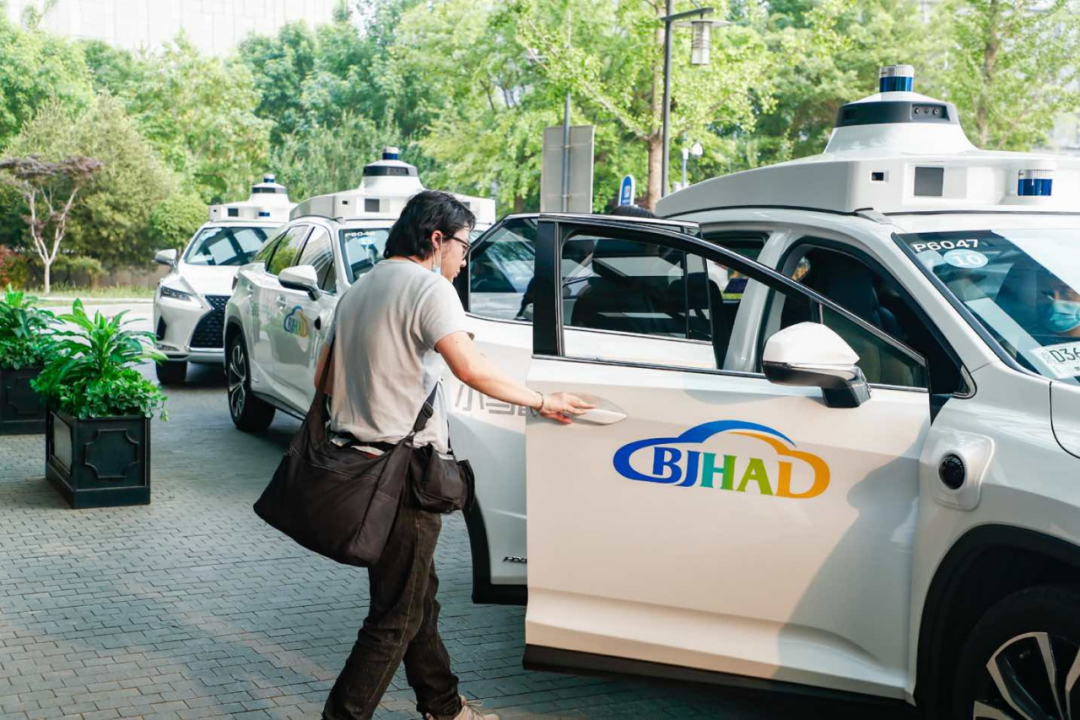
Some changes are beyond expectations. Initially, they decided to cut into Robotaxi, considering that the automatic driving technology could first land in Robotaxi, which might be easier to control financially than ordinary consumers. However, in the past two years, the demand for intelligence on private cars has increased sharply and the cost has decreased significantly, opening up a new application situation.
However, some advantages of Robotaxi still exist. For example, in terms of technology completion, no matter what kind of intelligent technology is carried on private cars, the premise is based on human-machine co-driving, and the driver is responsible for his behavior. On the other hand, Robotaxi has to make virtual drivers take on more tasks and responsibilities.
Although the experience of autonomous driving is not much different in the current regulations and scenarios, Xiaoma pointed out that early-stage technology is relatively simple and easy to develop in a short period of time, but as time goes on, it is necessary to look at performance from a larger perspective such as larger areas, more complex periods, longer mileage, and more times where the processing capability of each company can still show differences.
Today’s autonomous driving has passed the stage of dealing with routine scenarios and needs to consider its abilities and safety in extreme situations. In addition, the car must be able to be mass-produced and meet the standard of automobiles without any mistakes.
“Autonomous driving is a complex system engineering that cannot be developed simply with several software engineers or AI experts. To build safe technology, it requires a lot of data accumulation, scenario development, and the integration of software and hardware. Many automakers hope to have this ability, but whether they can achieve it is another matter.”
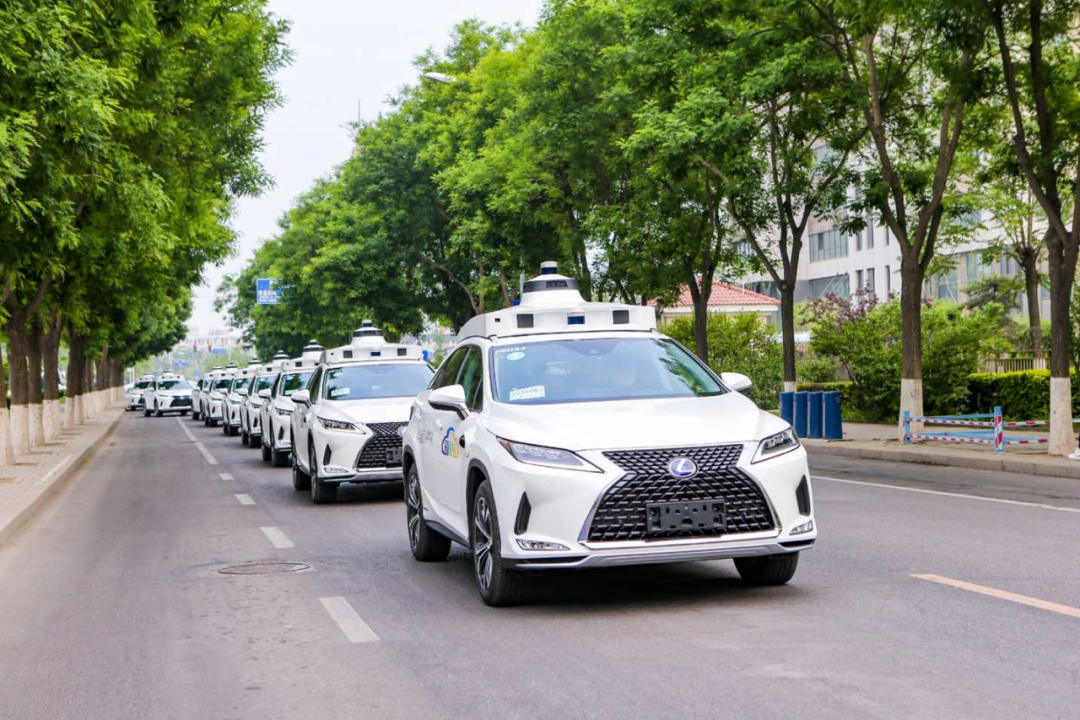
It seems a bit ambiguous, but Xiaoma, as a well-known road test brush tool in the industry, has this position to say so.
They operate in five locations in China and the US, each with its own characteristics and can also train different abilities. For example, many rainy days are tested in Guangzhou because it has a subtropical monsoon climate and one-third to half of the weather is rainy; Nansha District is also crowded with motorcycles, which is very helpful for data collection and technology development. Beijing has many unprotected intersections, and Shanghai has many narrow roads, whereas North America is high-speed roads.Just like the learning process of human beings, driving in Beijing, Shanghai and Guangzhou will shorten the adaptation time when driving in other places. Xiaoma increases its system’s generalization ability in this way, so as to reduce the workload of future expansion.
They are still running towards scale. As for this generation of autonomous vehicles, based on the Lexus RX450h, Xiaoma has established the first L4 autonomous driving scale production line, which has optimized production time, cost and stability.
Meanwhile, they are also seeking greater survival opportunities. They established a truck business unit last year and developed dual-line business. The ability and technology of virtual drivers developed on passenger cars are also applicable to commercial vehicles. Many difficulties are the same in both scenarios, and research and development can be fed back.
Their single-item return on investment is higher, and the likelihood of landing is also higher. Truck scenarios are relatively simple, with most of the time on highways, and the larger size can accommodate more computing power, better vision, and more sensors. In fact, many early startups turned to the commercial field after encountering bottlenecks.
But Xiaoma said that it is still impossible to judge which will achieve commercialization earlier.
“The reason why demand for autonomous driving is not so strong today is that autonomous driving technology still needs further polishing. If we go back to 2004, people wouldn’t believe that they would spend five or six hours staring at a phone screen every day. User needs are always stimulated by the development of technology, and we cannot predict the future with today’s behavior and ideas.”
To use a cliché, we are on the eve of Robotaxi.
The night is indeed very long, but the sun will still rise as usual.
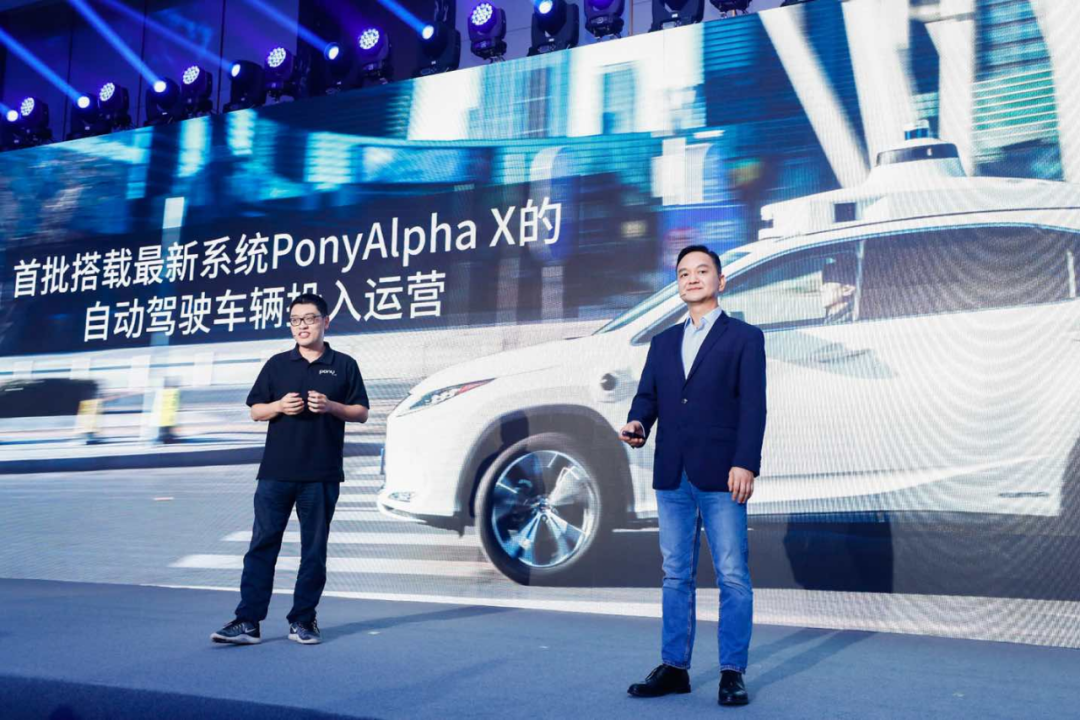
This article is a translation by ChatGPT of a Chinese report from 42HOW. If you have any questions about it, please email bd@42how.com.